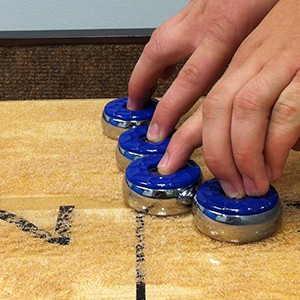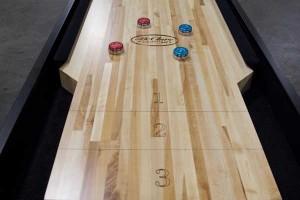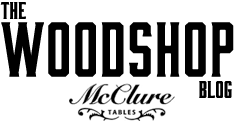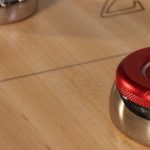
How Rebound Shuffleboard Compares to Regular Table Shuffleboard
If you have recently been to a bar or event with rebound shuffleboard, you may have wondered how rebound shuffleboard compares to normal table shuffleboard rules. For the most part, the rules stay the same, but the actual table, and its layout is greatly different.

A regular shuffleboard table is generally nine to twenty two feet in length and ranges from sixteen to twenty inches wide and the object of the game is to score the most points by sliding the puck into sections designated with point values at the far end of the table. Players each have four colored coded pucks to aid in differentiating for scoring purposes and players alternate turns and can use their pucks to knock their opponents out of the scoring zones. Points are totaled with the winner being the first player to accumulate twenty one points.
Much of these rules and regulations remain the same for rebound shuffleboard, and players of one game should have no difficulty understanding what is happening and why, when participating in the other variety of the game.
However, due to the smaller footprint of a rebound shuffleboard table, there are a number of differences in how the game is actually played.
Scoring is similar for both types, but the configuration of the table is markedly different. Instead of being long and narrow the rebound version is approximately six feet in length and almost twice as wide at forty three inches. The playing surface resembles a “V” shape.
The game pla y differs in that instead of skillfully sliding the pucks in a straight line they are bounced on an angle against a cushioned side at the base of the “V” and redirected back towards the player to the scoring area. Much like in a game of pool the direction and speed at which the puck rebounds off of the cushion is determined by the liveliness, or lack thereof, in the cushion adding an additional factor into the play.
y differs in that instead of skillfully sliding the pucks in a straight line they are bounced on an angle against a cushioned side at the base of the “V” and redirected back towards the player to the scoring area. Much like in a game of pool the direction and speed at which the puck rebounds off of the cushion is determined by the liveliness, or lack thereof, in the cushion adding an additional factor into the play.
The standard layout shuffleboard table is the more popular of the two and is recognized as the preferred format. It has a wider acceptance in the world of competitive shuffleboard tournament play. Both games provide a high level of enjoyment, utilizing similar skills, but if you intend to participate in competitive shuffleboard you will soon see how rebound shuffleboard compares to normal table shuffleboard and the significant difference in availability to sanctioned competitions. Often the best use of Rebound Shuffleboard is in tights spaces where you don’t have length for a regular table shuffleboard.




What do you know about the V-Back rebound shuffleboard game made by Protocision Engineering of Detroit in the mid-60s? I am wondering where I can research their value. I haven’t found any for sale so far.
Boy I have never seen that model can you send us some pictures not a lot of value in the antique stuff for shuffleboard tables
If it is a banked shuffleboard can shots be made straight besides banked?
I played on a rebound shuffle board and it’s great. The one I played on is a ‘L’ shape board that has a back board on the one side at a 45degree angle which you bounce the rocks off of. It’s great fun as the rocks spin at they bounce off the 45 degree back board